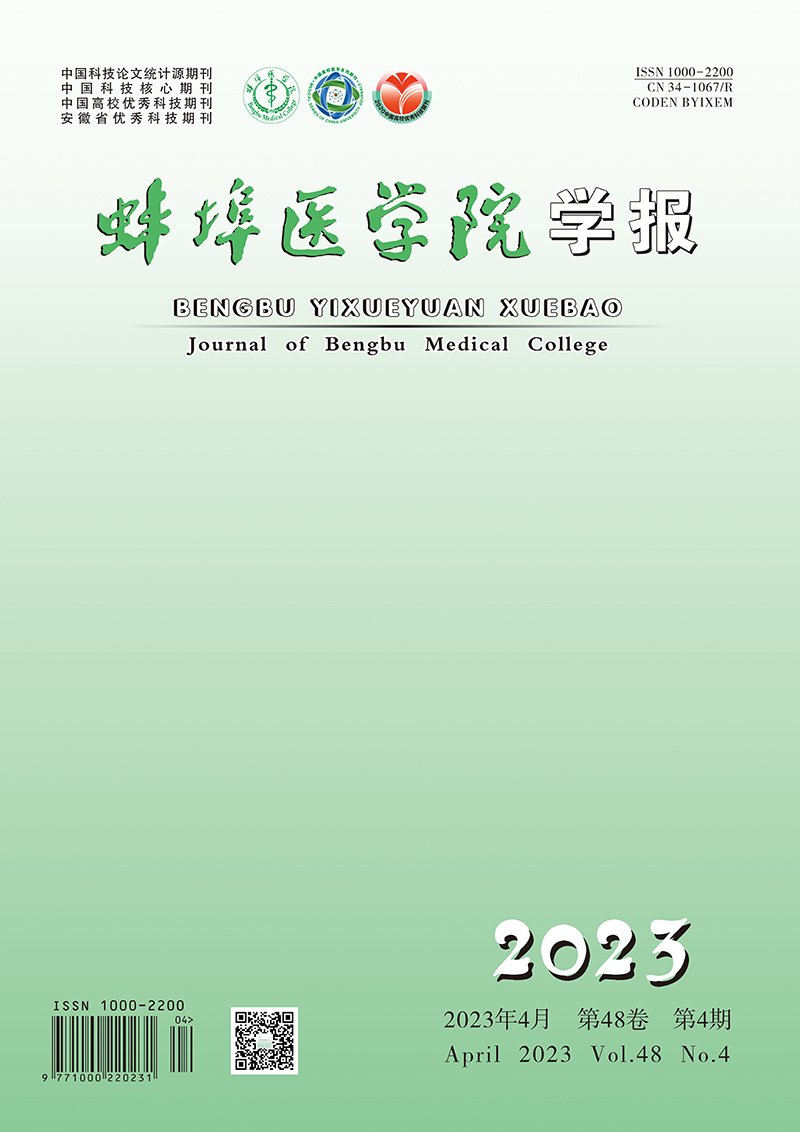-
妊娠期糖尿病(GDM)是妊娠期常见的代谢并发症;无需药物治疗,仅通过饮食调整能充分控制血糖正常的GDM称为饮食控制的GDM为A1型;需要药物治疗才能达到血糖正常的GDM则为A2型。由于孕前未常规筛查糖尿病,因此GDM很难和妊娠前存在的糖尿病相鉴别[1]。在妊娠期,6%~9%孕妇合并糖尿病,其中约90%为GDM,GDM的发病率在不同的地区有所不同,变化范围从0.6%~15%,这取决于人们的种族、民族和社会经济地位[1-2]。GDM对母亲及胎儿产生较多不良后果,对母亲的影响有妊娠期剖宫产率升高、妊娠期高血压、先兆子痫,产后发展为2型糖尿病、代谢综合征、心血管、肾脏、肝脏和视网膜疾病;对胎儿的影响有早产儿、巨大儿、出生缺陷、肥胖症和糖尿病发生概率升高[3]。
妊娠期脂质水平升高,这是适应妊娠的生理现象,被认为是需要为胎儿提供能量和营养的生理机制[4],在妊娠中期和晚期,血浆三酰甘油(TG)增加了2~3倍,伴随总胆固醇(TC)、低密度脂蛋白胆固醇(LDL-C)及高密度脂蛋白胆固醇(HDL-C)的轻微增加。分娩后TC、HDL-C、TG下降,LDL-C往往保持不变[5]。以往的研究表明,GDM与正常妊娠孕妇相比,其有更严重的高脂血症,可能是通过脂肪组织炎症和肾上腺髓质素过表达从而导致脂质失调[6]。适当处理高血糖和血脂异常被认为可以减少与GDM相关的并发症,但是关于GDM病人血脂的变化,学者们持有不同意见[7-9]。为了更好地了解GDM和血脂的关系,本课题组对本院GDM病区145例产妇病例资料进行分析,主要观察妊娠中晚期正常孕妇和GDM孕妇血脂变化情况以及血脂与A2型GDM的相关性,现作报道。
HTML
-
选取2018年4-10月在无锡妇幼保健院GDM区分娩的145例产妇进行观察分析。纳入标准:(1)观察组符合GDM诊断标准(即75 g葡萄糖耐量试验的空腹血糖水平5.1~6.9 mmol/L或服糖后1 h血糖水平≥10 mmol/L或服糖后2 h血糖水平8.5~11.0 mmol/L);(2)妊娠20~25周(中期)及妊娠35~40周(晚期)行血脂检查的孕妇。排除标准:(1)合并严重心肝肾功能障碍以及其他内科疾病;(2)1型或2型糖尿病、孕前糖尿病、遗传性代谢性疾病;(3)最近30 d内使用过可能影响脂质水平的药物,包括皮质类固醇等。其中GDM孕妇无需使用胰岛素控制血糖的53例为观察组A1,GDM孕妇需使用胰岛素控制血糖的43例为观察组A2,正常孕妇49例为对照组。
记录孕妇年龄、孕龄、孕前体质量指数(BMI)、胎儿体脂量等。观察组A2的BMI与对照组及观察组A1比较差异有统计学意义(P < 0.05),因此将BMI < 25 kg/m2赋值为0,BMI≥25 kg/m2赋值为1,进行二分类logistic回归分析。3组孕妇孕龄、胎儿体脂量、巨大儿数等一般资料差异均无统计学意义(P>0.05)(见表 1),具有可比性。
分组 n 年龄/岁 BMI/
(kg/m2)胎儿体脂量/g 孕龄/d 对照组 49 29.1±4.4 22.2±2.2 3 307.2±400.5 275.6±8.6 观察组A1 53 30.9±4.1* 22.4±3* 3 452.4±473.1 275.3±9.2 观察组A2 43 30.6±3.2 24.0±3.3*# 3 470.3±434.1 268.4±9.4*# F — 2.93 5.40 2.00 9.20 P — >0.05 <0.01 >0.05 <0.01 MS组内 — 15.729 8.153 191 919.984 81.717 与对照组比较*P < 0.05;与观察组A1组比较#P < 0.05 -
孕妇经过10~12 h禁食后采集血样检测TG、TC、HDL-C、LDL-C、脂蛋白a、载脂蛋白(Apo)A1和ApoB,脂质指标在妊娠中晚期进行评估:妊娠20~25周(中期);妊娠35~40周(晚期)。于妊娠24~28周做葡萄糖耐量试验:采集血样查空腹血糖,5 min内服下200 mL左右葡萄糖水(含75 g无水葡萄糖)后分别在1 h、2 h后采集血样测血糖。使用贝克曼库尔特全自动生化分析仪(UniCel DxC 800 Synchron)及相应配套试剂盒测定。
-
采用单因素方差分析(采用S-N-K检验)、logistic回归分析及ROC曲线分析。
1.1. 一般资料
1.2. 生化指标
1.3. 统计学方法
-
观察组A2孕中期的TG、HDL-C、ApoA1、脂蛋白a及孕晚期的TC、TG、HDL-C、ApoA1与对照组比较差异有统计学意义(P < 0.05~P < 0.01),观察组A1孕中期的HDL-C、Apo A1、脂蛋白a及孕晚期的ApoA1、HDL-C与观察组A2比较差异有统计学意义(P < 0.01)(见表 2)。
分组 n TC/
(mmol/L)TG/
(mmol/L)HDL-C/
(mmol/L)LDL-C/
(mmol/L)ApoA1/
(g/L)Apo B/
(g/L)脂蛋白a/
(mg/L)孕中期 对照组 49 6.2±1.0 3.0±1.5 2.5±0.7 3.5±0.9 2.4±0.4 1.3±0.3 149.5±113.5 观察组A1 53 6.1±1.1 3.3±1.2 2.2±0.5* 3.5±1.0 2.4±0.3 1.3±0.3 150.8±133.4 观察组A2 43 6.1±1.3 3.8±1.9* 2.0±0.5** 3.4±1.3 2.0±0.4**## 1.4±0.3 230.3±180.1**## F — 0.13 3.15 8.87 0.13 18.01 1.68 4.75 P — >0.05 <0.05 <0.01 >0.05 <0.01 >0.05 <0.05 MS组内 — 1.281 2.356 0.331 1.140 0.134 0.09 20 464.997 孕晚期 对照组 49 5.8±1.0 3.4±1.1 2.2±0.5 3.5±0.9 2.4±0.4 1.4±0.4 156.6±127.9 观察组A1 53 6.6±1.7* 4.3±1.9* 2.0±0.5* 3.9±1.2 2.5±0.4 1.6±0.4* 197.0±211.6 观察组A2 43 6.4±1.6* 4.4±2.3* 1.7±0.4**## 3.6±1.4 2.1±0.5**## 1.5±0.4 211.1±164.0 F — 4.02 4.43 12.9 1.6 10.72 3.18 1.26 P — <0.05 <0.05 <0.01 >0.05 <0.01 <0.05 >0.05 MS组内 — 2.154 3.296 0.223 1.381 0.187 0.160 29 881.076 q检验:与对照组比较*P < 0.05,**P < 0.01;与观察组A1组比较##P < 0.01 -
孕中期的TG、HDL-C、ApoA1、脂蛋白a及孕晚期的TC、TG、HDL-C、ApoA1作为自变量,以发生A2型GDM作为因变量,调整BMI影响后,行logistic回归分析,结果显示孕晚期TC为孕期发生A2型GDM的危险因素,孕中期ApoA1、孕晚期HDL-C为孕期发生A2型GDM的保护因素(P < 0.01)(见表 3)。根据ROC曲线计算,孕中期ApoA1、孕晚期TC及孕晚期HDL-C在联合预测孕期发生A2型GDM中,曲线下面积为0.869,95%CI为0.795~0.943,具有较高预测可信度(P < 0.05)。
变量 B SE Waldχ2 P OR(95%CI) 孕中期 Apo A1 -2.553 0.864 8.734 <0.01 0.078(0.014~0.423) 孕晚期 TC 1.087 0.318 11.694 <0.01 2.965(1.590~5.527) 孕晚期 HDL-C -2.601 0.864 9.050 <0.01 0.074(0.014~0.404) BMI -1.230 0.732 2.824 >0.05 0.292(0.070~1.227)
2.1. 3组血脂情况比较
2.2. logistic回归分析各因素与孕期发生A2型GDM的关系
-
妊娠期间的血脂水平从妊娠9~13周开始升高,随妊娠进展逐渐上升,31~36周达到高峰,维持高水平至分娩,于产后24 h显著下降,4~6周后恢复至正常水平[10]。母体脂质是决定胎儿脂肪量的重要因素,在妊娠中晚期,母体表现为高胰岛素血症和胰岛素抵抗,这是一种机制导致脂肪组织破坏和随后的高TG血症从而满足胎儿生长的需要。
然而在患有GDM的孕妇中,外周血中胰岛素抵抗更为显著。关于GDM孕妇的血脂异常情况的报道是非常多样化。IIMURA等[9]报道对日本842例GDM-孕妇及319例GDM+孕妇进行回顾性队列研究,在孕20~28周检测TG、TC、LDL-C、HDL-C、ApoB、ApoB48、ApoA1和ApoC-Ⅲ值比较,2组比较差异均无统计学意义。WANG等[8]研究表明GDM组TG、TG/HDL-C比值高,与对照组比较差异均有统计学意义。而TC、LDL-C值在GDM孕妇及正常孕妇中比较无统计学意义。本研究发现观察组A1与对照组比较,孕中期的HDL-C及孕晚期的TC、TG、HDL-C差异有统计学意义,而观察组A2较观察组A1的脂质谱发生了显著的变化,观察组A2与对照组的孕中期的TG、HDL-C、ApoA1、脂蛋白a及孕晚期的TC、TG、HDL-C、ApoA1各值比较均有统计学意义,其中TG、HDL-C及ApoA1值从孕中期开始就存在显著差异。本研究GDM组(A1组与A2组)与对照组的血脂比较结果,与既往研究结果的差异可能是由于本研究与其他研究之间选择不同的方法导致:本课题组将GDM孕妇根据是否需要使用胰岛素控制血糖分为观察组A1及观察组A2;LAYTON等[7]将GDM分成胰岛素敏感性缺陷组和胰岛素分泌缺陷组,WANG等[8]实验GDM组是OGTT+孕妇,包括饮食控制及需要胰岛素控制血糖的孕妇,IIMURA等[9]在孕20~28周进行50 g葡萄糖负荷试验筛查出GCT+孕妇,然后通过OGTT将其分为GDM+组及GDM-组进行血脂比较。但是在大多数研究中,GDM组的HDL-C水平显著降低与本研究一致[7-8, 11]。本研究中观察组A1及观察组A2的血脂比较的差异,认为可能是血糖波动引起了血脂的质和量的分布变化,造成A1型GDM和A2型GDM孕妇外周血循环中血脂的不一致。因此严密管理孕妇血糖至关重要,它同样对孕妇血脂水平的调控起到积极的作用。
国内外已有研究探讨孕早期血脂对GDM发生的影响,其结果均提示孕早期高水平的TG是GDM发生的危险预测因素[12-13]。本研究通过logistic回归分析及ROC曲线分析发现孕中期ApoA1、孕晚期TC及孕晚期HDL-C联合预测A2型GDM发病,具有较高预测可信度,联合检测曲线下面积为0.869。ApoA1是HDL-C颗粒的主要结构蛋白组分,具有多效性生物功能以及抗炎特性。WU等[14]通过建立胰岛素抵抗的孕鼠模型,表明ApoA1通过增加脂肪组织和骨骼肌的胰岛素敏感性从而抑制妊娠诱导的胰岛素抵抗,是降低GDM发生的潜在指标。新近研究[15]表明TG/HDL-C比值对GDM的诊断及预测具有较高的敏感性,可能是本研究的样本量较小,导致在TG和A2型GDM之间没有联系。此外本研究仅仅对孕中期及孕晚期的血脂水平进行了相应的研究,并未对孕早期的血脂水平进行统计分析,这是本课题组进一步研究方向。此外ApoA1、TC及HDL-C与A2型GDM的具体机制还有待于进一步探究。
综上,在妊娠中晚期,与正常孕妇比较,A2型GDM孕妇的脂质谱发生了显著的变化,孕晚期TC为孕期发生A2型GDM的危险因素,孕中期ApoA1、孕晚期HDL-C为孕期发生A2型GDM的保护因素,通过联合孕中期ApoA1、孕晚期TC及孕晚期HDL-C指标可以预测孕期A2型GDM的发生,具有较高可信度。因此在临床中因重视血脂指标的变化,以及早发现和干预A2型GDM,从而降低其引起的相关不良结局的发生,改善母儿预后。






 DownLoad:
DownLoad: